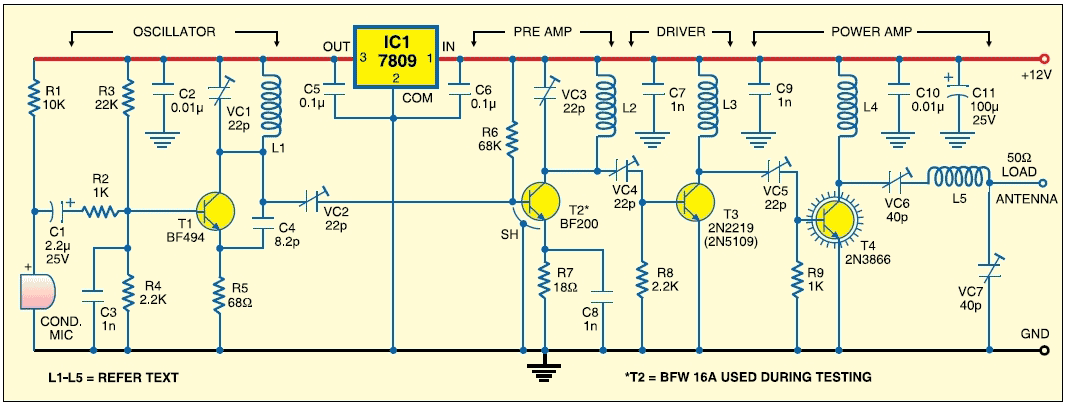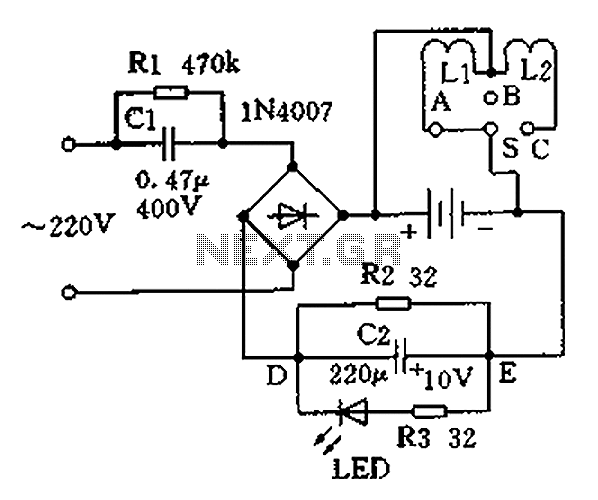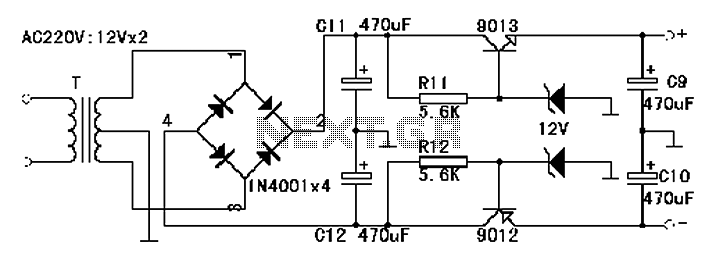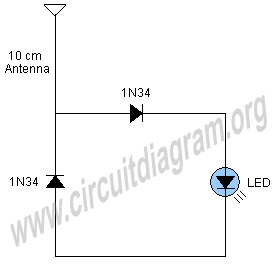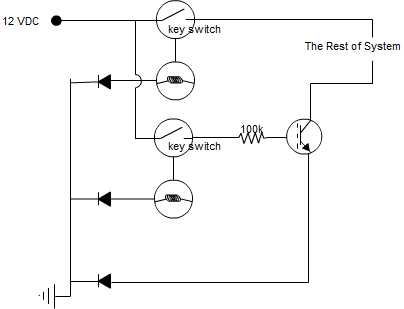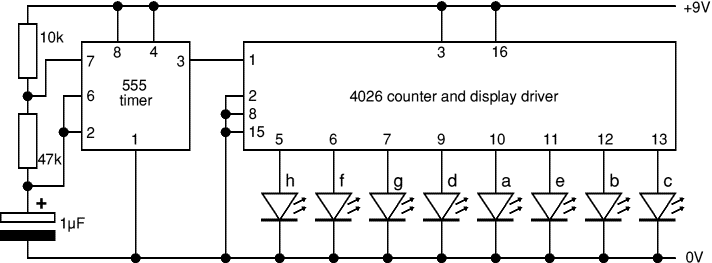
16 led46 led circuit combination
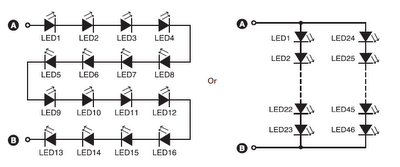
A series combination of 16 LEDs provides a luminance (lux) equivalent to a 12W bulb. However, if two series combinations of 23 LEDs are connected in parallel (totaling 46 LEDs), the output is equivalent to a 35W light bulb. Diode D1 (1N4007) and capacitor C1 serve as rectifying and smoothing elements to supply DC voltage to the row of LEDs. For a 16-LED row, use Cx of 12 µF, 630V; C1 of 22 µF, 100V; and a zener diode rated at 48V, 1W. Similarly, for the 46 LED combination, use Cx of 0.47 mF, 630V; C1 of 33 µF, 150V; and a zener diode rated at 69V, 1W. The total cost of this circuit, including the LEDs, ranges from Rs 200 to Rs 400.
The described circuit utilizes LED technology to create efficient lighting solutions. The series configuration of 16 LEDs achieves an output comparable to a traditional 12W incandescent bulb, while the parallel configuration of 46 LEDs enhances luminance to that of a 35W bulb. The choice of LED arrangement is critical for achieving desired brightness levels, with series connections increasing voltage and parallel connections allowing for higher current capacities.
The rectification and smoothing components, specifically diode D1 (1N4007) and capacitor C1, are essential for converting the AC voltage to a stable DC voltage suitable for LED operation. The 1N4007 diode is a general-purpose rectifier capable of handling reverse voltages up to 1000V and forward currents of 1A, making it ideal for this application. Capacitor C1, which varies in value depending on the LED configuration, functions to filter out voltage ripples, ensuring a steady power supply to the LEDs.
For the 16-LED setup, a capacitor value of 22 µF rated at 100V is appropriate to provide necessary smoothing. In contrast, the 46-LED configuration requires a larger smoothing capacitor of 33 µF rated at 150V to accommodate the increased current demand. The use of zener diodes, rated at 48V and 69V for the respective configurations, provides voltage regulation, preventing overvoltage conditions that could damage the LEDs.
The cost range of Rs 200 to Rs 400 reflects the affordability of this lighting solution, making it an attractive option for consumers seeking energy-efficient alternatives to traditional lighting. Overall, this circuit design exemplifies the integration of modern electronic components to achieve high-performance lighting solutions with minimal energy consumption.Aseries combination of 16 LEDs Gives a luminance (lux) equivalent of a 12W bulb. But if you have two series combinations of 23 LEDs in parallel (Total 46 LEDs), it Gives equal to a 35W light bulb. Diode D1 (1N4007) and capacitor C1 act as rectifying and smoothing elements to Provide DC voltages to the row of LEDs.
For a 16-LED row, use Cx of 12:22 µF, 630V; C1 of 22 µF, 100V; and zener of 48V, 1W. Similarly, for 46 LEDs combination use Cx of 0:47 mF, 630V; C1 of 33 µF, 150V; and zener of 69V, 1W. This circuit (inclusive of LEDs) costs Rs 200 to Rs 400. 🔗 External reference
The described circuit utilizes LED technology to create efficient lighting solutions. The series configuration of 16 LEDs achieves an output comparable to a traditional 12W incandescent bulb, while the parallel configuration of 46 LEDs enhances luminance to that of a 35W bulb. The choice of LED arrangement is critical for achieving desired brightness levels, with series connections increasing voltage and parallel connections allowing for higher current capacities.
The rectification and smoothing components, specifically diode D1 (1N4007) and capacitor C1, are essential for converting the AC voltage to a stable DC voltage suitable for LED operation. The 1N4007 diode is a general-purpose rectifier capable of handling reverse voltages up to 1000V and forward currents of 1A, making it ideal for this application. Capacitor C1, which varies in value depending on the LED configuration, functions to filter out voltage ripples, ensuring a steady power supply to the LEDs.
For the 16-LED setup, a capacitor value of 22 µF rated at 100V is appropriate to provide necessary smoothing. In contrast, the 46-LED configuration requires a larger smoothing capacitor of 33 µF rated at 150V to accommodate the increased current demand. The use of zener diodes, rated at 48V and 69V for the respective configurations, provides voltage regulation, preventing overvoltage conditions that could damage the LEDs.
The cost range of Rs 200 to Rs 400 reflects the affordability of this lighting solution, making it an attractive option for consumers seeking energy-efficient alternatives to traditional lighting. Overall, this circuit design exemplifies the integration of modern electronic components to achieve high-performance lighting solutions with minimal energy consumption.Aseries combination of 16 LEDs Gives a luminance (lux) equivalent of a 12W bulb. But if you have two series combinations of 23 LEDs in parallel (Total 46 LEDs), it Gives equal to a 35W light bulb. Diode D1 (1N4007) and capacitor C1 act as rectifying and smoothing elements to Provide DC voltages to the row of LEDs.
For a 16-LED row, use Cx of 12:22 µF, 630V; C1 of 22 µF, 100V; and zener of 48V, 1W. Similarly, for 46 LEDs combination use Cx of 0:47 mF, 630V; C1 of 33 µF, 150V; and zener of 69V, 1W. This circuit (inclusive of LEDs) costs Rs 200 to Rs 400. 🔗 External reference
